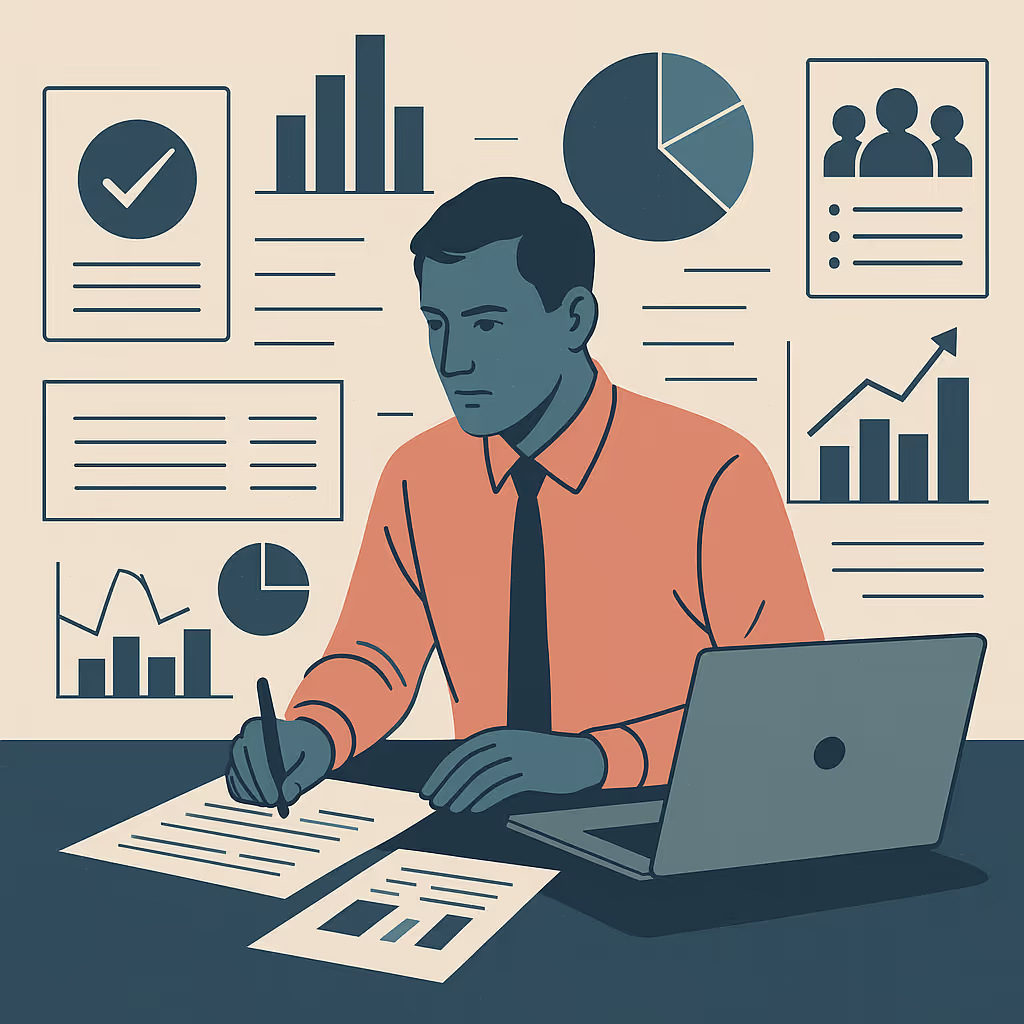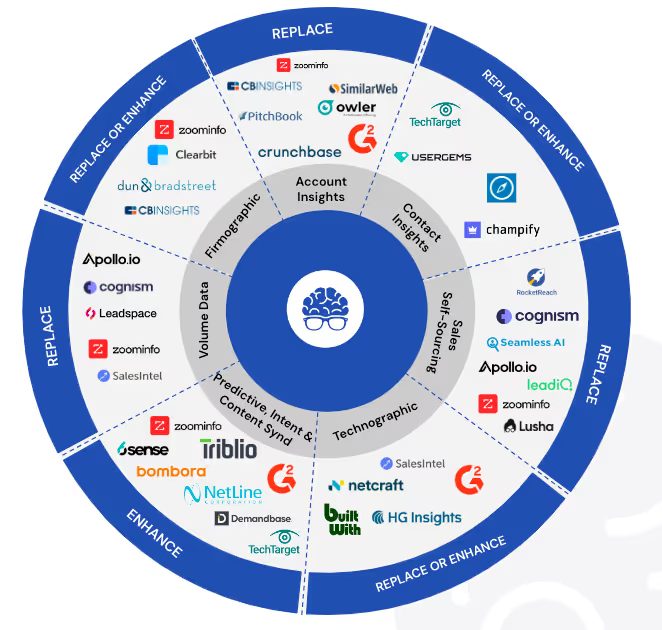If there’s one word that defines demand generation in 2025, it’s pressure.
The survey makes this plain: senior practitioners are being asked to do the impossible. Deliver more pipeline. Do it faster. Do it with smaller teams—95 percent with ten or fewer people, four out of five with five or fewer. Do it while managing fractured tech stacks, while navigating tool sprawl and integration debt, while operating in an environment where “good enough” data is no longer tolerated.
These numbers tell a story of overextended leaders trying to keep the growth engine humming while running on fumes. It’s not just about marketing anymore—it’s about orchestration. Demand gen leaders are becoming part strategist, part systems engineer, part firefighter, constantly deciding where scarce time and budget should be applied, and what must simply be ignored.
And yet, in that pressure, something interesting is happening. The field is beginning to reset.
For much of the last decade, demand generation was defined by abundance. Abundant tools, abundant databases, abundant campaigns. Success was measured by how many names you could dump into the funnel, how many channels you could light up, how many platforms you could claim in your martech stack. Scale was the virtue; volume was the proof.
But 2025 is forcing a reckoning. Under pressure, the discipline is moving away from bloat, vanity metrics, and blind trust in database giants. It is hardening around precision, verification, and proof. The core questions have shifted from “How many leads did we generate?” to “How many of those leads were verified, reached, and converted into pipeline?” From “What’s the size of the database?” to “What’s the connect rate, the speed-to-lead, the verified coverage of our ICP?”
What the survey reveals is a profession maturing in real time. Scarcity is driving discipline. Pressure is forcing clarity. And in that clarity, demand gen leaders are redefining their craft—not as a factory for volume, but as a system for trust and precision.
The Small but Mighty DG Team
Let’s start with the people, because that’s where the tension really lives. Ninety-five percent of demand generation teams have fewer than ten members. Eighty percent have five or fewer. For a function tasked with building pipeline across continents, channels, and buying groups, those numbers are astonishing. They describe an entire industry where the typical team looks less like a battalion of soldiers marching under a general and more like two chefs in a cramped kitchen, juggling orders, chopping vegetables, and trying not to burn what’s already on the stove.
And that reality forces a profound shift in how growth is pursued. These aren’t teams that can simply “do everything.” They’re teams that must ruthlessly prioritize, deciding which programs get oxygen and which suffocate on the vine. So it isn’t surprising that ABM/Outbound and Inbound programs dominate as the Tier 1 engines. They’re the dishes that must always be on the menu, because they’re what fills the seats and pays the bills. Events and paid campaigns? They’ve become side dishes—secondary levers, not luxuries, but scale multipliers that are deployed when budgets allow, not when leaders dream.
This scarcity of people and resources is driving a mindset shift. Growth isn’t being achieved by piling on headcount anymore. It’s being squeezed out of process quality, automation, and verified data. That’s the only way a team of five can do the work of twenty. In other words, efficiency has become not just an advantage, but a survival strategy.
Pipeline Is Everything
And under all of this is the relentless drumbeat of pipeline. Survey respondents could not have been clearer: pipeline is the number one mandate.
- 75% named ABM/Outbound as their top initiative for the next six months.
- 44% are doubling down on SDR prospecting and enablement.
- 50% are pursuing near-term pipeline pushes, often mandated directly by CMOs and CROs.
Inbound and events still matter—together, they accounted for about half of total pipeline in the survey—but the urgency is unmistakable. Leaders are under pressure not just to build brand machines for the future, but to hit this quarter’s numbers, now.
And that urgency has consequences. Portfolios are narrowing. Leaders are stripping away the “nice-to-have” campaigns and doubling down on fewer, better-instrumented programs. ABM, SDR workflows, and inbound speed-to-lead aren’t just strategies; they’re lifelines. Everything else—social, nurture, community, even content—is optional.
What we’re seeing here is a field bending under pressure, but not breaking. It’s adapting. Demand gen is becoming less about breadth and more about precision. Less about activity and more about proof. And in that narrowing, in that hardening, you can see the outlines of a profession being reshaped for the next decade.
AI: Assistive, Not Autonomous

If you listened only to the hype, you’d think artificial intelligence had already rewritten the rules of marketing. You’d think demand gen leaders were running fully automated campaigns, where machine learning models predicted the next big buyer before the buyer knew themselves, and AI agents were negotiating contracts while human marketers watched from the sidelines.
But the reality revealed in the survey is far more sobering—and far more interesting. Three out of four teams—76%—use AI only for task-specific workflows. Drafting content. Transcribing calls. Enriching leads. It’s the kind of work that feels invisible but consumes hours, and it’s exactly the kind of repetitive labor AI is best at eliminating. That’s where leaders trust it.
Beyond that? Only 12% have AI integrated into core workflows. Just 4% run AI-driven marketing at scale. Those numbers aren’t a rounding error—they’re the truth cutting through the hype cycle. Demand gen leaders are pragmatic. They will happily let AI be an assistant, but they’re not ready to hand over the keys. Not when pipeline, quotas, and credibility with sales are on the line.
And that caution makes sense. Predictive scoring and fully automated prospecting promise transformation, but they also demand trust. And trust is scarce. Leaders don’t yet believe these systems can make high-stakes decisions without human judgment, or that their integrations are reliable enough to run unsupervised.
So instead, we’re watching something subtler: a culture of measured adoption. Teams are focusing on two or three workflows where the lift is clear and the risk is low—turning transcripts into CRM notes, enriching data, accelerating content creation. They baseline time and quality, they measure lift, they keep humans in the loop. Only once they see proof do they expand.
It’s worth paying attention to the metaphor here. AI in demand gen isn’t the head chef inventing the menu—it’s the sous-chef chopping onions faster, fetching ingredients, and occasionally suggesting a garnish. The creative and strategic decisions—the ones that determine whether pipeline actually gets built—remain firmly human.
And that, I’d argue, is the deeper story. AI in demand gen isn’t a revolution. It’s a reallocation of time. By automating drudgery, leaders are buying back focus for the things only humans can do: positioning, strategy, messaging, judgment. The promise of AI isn’t that it will replace marketers; it’s that it might finally let them spend more of their day actually being marketers.
The hype cycle wants transformation. The practitioners are choosing augmentation. And for now, that choice looks less like timidity and more like wisdom.
Data Vendors: The Weakest Link
If there’s a crisis point in the 2025 Demand Gen survey, it’s not creative, or channels, or even AI. It’s data.
The numbers here are stark. Average satisfaction with B2B data vendors is just 6.0 out of 10. Nearly three-quarters of users—71%—are detractors, and a paltry 6% would call themselves promoters. That’s not a performance gap; it’s a collapse of confidence.
The complaints are familiar but no less damning: weak intent signals (53%), outdated data (43%), high cost (41%), low adoption (37%), and painful integrations (33%). If you wanted to design a system that eroded trust in data at every level—marketers, sellers, executives—you’d build exactly this one.
And that’s the deeper story. For the past decade, the B2B data market was defined by scale. The bigger the database, the more valuable it was said to be. ZoomInfo, Apollo, LinkedIn Sales Navigator—they became staples of the modern sales stack because they promised abundance: millions of contacts, endless filters, infinite reach. But abundance without reliability eventually collapses under its own weight.
That’s what we’re seeing now. The era of the massive prebuilt database is unraveling. Leaders are realizing that breadth doesn’t equal accuracy, that catalog size doesn’t translate into connect rates, that a mountain of contacts doesn’t produce pipeline if half bounce or route to the wrong personas. So they’re hedging. The survey shows most are now running multi-vendor portfolios, averaging 2.25 providers. They’re experimenting with lighter, workflow-native tools—LeadGenius, Clay, DealSignal—that prioritize verification, enrichment, and fit over brute-force scale.
But beneath all this movement lies a single word: trust. If the data isn’t verified, refreshed, and routed cleanly into CRM and MAP workflows, sellers tune out. And when sellers tune out, pipeline stalls. This is why the most forward-looking leaders are shifting their buying behavior. They’re not just buying databases; they’re demanding proof. Bake-offs. Verified accuracy. SLA-driven contracts. They want vendors to show them the bounce rates, the direct-dial percentages, the lift in connect-to-SQL before renewal is even considered.
Seen this way, the dissatisfaction isn’t just a complaint—it’s a recalibration. A discipline once oriented around abundance is reorienting around reliability. The giants of the last era scaled by promising coverage. The winners of the next era will scale by delivering credibility.
And that raises the biggest question of all: if trust really is the new currency of demand generation, then which vendors—and which leaders—are prepared to compete in that economy?
The 2025 DG Leader’s Playbook
Taken together, the survey paints demand generation as a discipline at an inflection point—not quite collapsing under its contradictions, but not comfortably stable either. It’s a system under strain, and under that strain you can see the outlines of a new operating model taking shape.
The best DG leaders aren’t the ones with the biggest budgets or the longest martech spreadsheets. They’re the ones practicing a kind of austerity politics: a relentless focus on what actually works, paired with a willingness to cut what doesn’t. And that’s crystallizing into a playbook that looks far more pragmatic, even utilitarian, than what came before.
First, a Verified Data Foundation.
In 2025, data quality isn’t a hygiene factor—it’s strategy. TAM coverage, verified contacts, mobile reach, signal fidelity: these are no longer background noise but the very inputs that determine whether pipeline is even possible. Bounce rates and duplicates aren’t dismissed as quirks anymore; they’re elevated to KPIs. In other words, precision is the new scale.
Second, Pairing Engines with Precision.
Inbound and events still deliver the volume that fills calendars, but precision lives elsewhere—SDR enablement and ABM. And here’s the striking thing: leaders are no longer just running these programs; they’re regulating them with the kind of rigor you’d expect in manufacturing. <5-minute speed-to-lead. 24–48 hour event follow-ups. These are process SLAs, not aspirational goals. And they’re being treated with the seriousness of revenue math.
Third, Scaling AI Where It Proves Lift.
The hype cycle promised AI as transformation. The reality is AI as incremental lift. What separates the leaders is not how many AI pilots they can name, but how disciplined they are in standardizing a few workflows—content drafting, transcription to CRM, enrichment—measuring the gains, and then expanding. It’s less about replacing marketers than about buying them time.
Fourth, Fighting Vendor Inertia.
The biggest enemy here isn’t bad data, but bad contracts. Auto-renewals lock companies into mediocrity, and every quarter that passes under an outdated vendor is a quarter of lost pipeline. The strongest leaders have stopped treating vendor selection as procurement and started treating it as strategy—mapping renewal cycles, running KPI-based bake-offs, and demanding proof in live campaigns.
Finally, Balancing Real-Time & Peer-Validated Insights.
This might be the most revealing shift. With 74% of leaders turning to LinkedIn and 67% to peers, the DG community is self-teaching faster than vendors or analysts can publish. Authority is decentralizing. The operating knowledge of the field isn’t flowing down from big research firms—it’s being forged in Slack communities, LinkedIn threads, and whispered peer-to-peer benchmarks. Leaders are learning from each other in real time, and that’s raising the bar for everyone.
What this playbook suggests is a profession growing up. The tools may still be noisy, the vendors frustrating, the AI immature—but DG leaders are codifying a way of working that is leaner, tougher, and more evidence-driven than what came before. It’s not glamorous. It’s not “the year of ABM” or “the era of intent data.” It’s a new culture of rigor: where what counts is what can be verified, measured, and repeated.
And in that way, the playbook isn’t just tactical—it’s philosophical. Demand generation in 2025 is showing us what happens when a profession decides that the center of its identity isn’t experimentation or scale, but trust and discipline. That’s the throughline tying data, AI, process, and peer learning together. And it’s the reason why this moment feels less like the end of demand gen, and more like its re-founding.
Demand generation in 2025 is not dying—it’s hardening.
What we’re watching isn’t a collapse of the field but a transformation of its center of gravity. For much of the past decade, demand gen was fueled by abundance—more tools, more databases, more campaigns, more hires. Success was often measured in breadth: how many names you could dump into the top of the funnel, how many programs you could launch in parallel, how many platforms you could stitch together.
But 2025 is forcing something else. Lean teams, limited budgets, and rising executive impatience are reshaping demand gen into a discipline defined not by flash but by discipline. Leaders are being asked to deliver growth with five-person teams, not sprawling org charts. They’re being told to prove the value of every program in quarters, not years. They’re expected to work with fractured data ecosystems while showing airtight attribution.
And so the playbook is narrowing: verified data, pragmatic AI, and ruthless pipeline prioritization are becoming the foundation stones. Campaigns are fewer but sharper, powered less by hunch and more by signals. AI isn’t the sci-fi promise of autonomous marketing; it’s the assistant cleaning up call notes, drafting emails, or refreshing CRM fields. The glamor of the category is fading, but the work is becoming sturdier, more precise, less forgiving.
Here’s the paradox that the survey makes plain: for all the frustration, 8 in 10 demand gen leaders say they would take a meeting with a data partner who could prove better accuracy, coverage, and cost. That openness is extraordinary. It tells us that dissatisfaction with legacy vendors hasn’t bred resignation; it’s bred hunger. Leaders aren’t content to limp along with what they’ve got—they’re actively searching for proof that someone can do better.
And that’s the quiet revolution underneath the noise. The future of demand gen isn’t about tolerating flawed data and bloated stacks because “that’s just how it is.” It’s about re-founding the discipline on trustworthy, timely, verified data that actually converts into pipeline. That’s not a nice-to-have; it’s the currency of growth.
In that sense, demand generation in 2025 is a mirror of the broader economy. In an age of scarcity—scarcity of resources, trust, and time—value shifts to the players who can cut through the noise and deliver reliability. The same way supply chains hardened after COVID, demand gen is hardening now. The teams that will thrive are the ones that build not the biggest machines, but the most resilient ones—machines where every moving part is tested, verified, and tied to results.
That’s the story this survey is telling us. Not decline. Not stagnation. But discipline, precision, and the beginning of a new era where pipeline isn’t conjured from volume but carved from trust.




